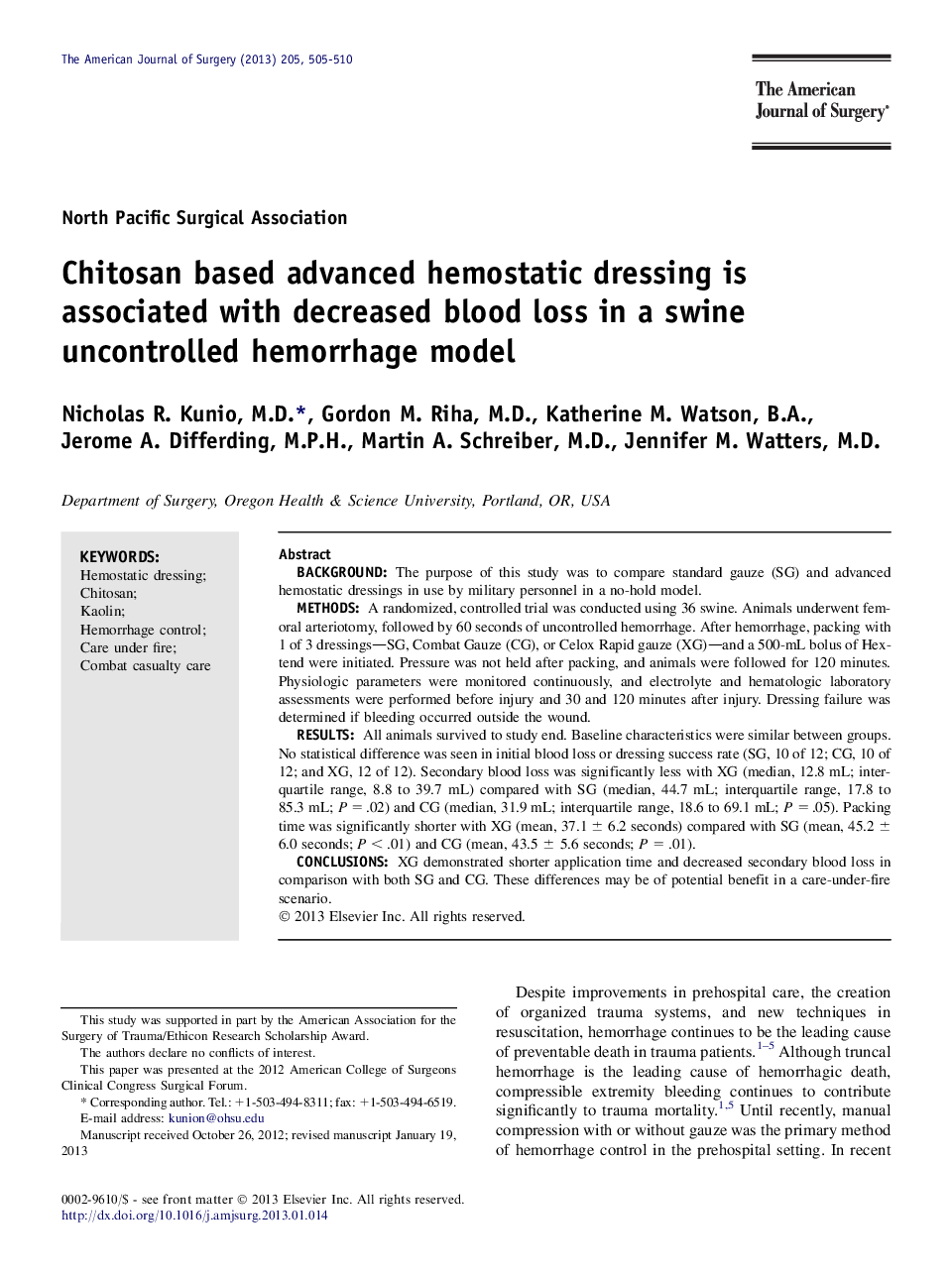| کد مقاله | کد نشریه | سال انتشار | مقاله انگلیسی | نسخه تمام متن |
|---|---|---|---|---|
| 4279259 | 1611519 | 2013 | 6 صفحه PDF | دانلود رایگان |

BackgroundThe purpose of this study was to compare standard gauze (SG) and advanced hemostatic dressings in use by military personnel in a no-hold model.MethodsA randomized, controlled trial was conducted using 36 swine. Animals underwent femoral arteriotomy, followed by 60 seconds of uncontrolled hemorrhage. After hemorrhage, packing with 1 of 3 dressings—SG, Combat Gauze (CG), or Celox Rapid gauze (XG)—and a 500-mL bolus of Hextend were initiated. Pressure was not held after packing, and animals were followed for 120 minutes. Physiologic parameters were monitored continuously, and electrolyte and hematologic laboratory assessments were performed before injury and 30 and 120 minutes after injury. Dressing failure was determined if bleeding occurred outside the wound.ResultsAll animals survived to study end. Baseline characteristics were similar between groups. No statistical difference was seen in initial blood loss or dressing success rate (SG, 10 of 12; CG, 10 of 12; and XG, 12 of 12). Secondary blood loss was significantly less with XG (median, 12.8 mL; interquartile range, 8.8 to 39.7 mL) compared with SG (median, 44.7 mL; interquartile range, 17.8 to 85.3 mL; P = .02) and CG (median, 31.9 mL; interquartile range, 18.6 to 69.1 mL; P = .05). Packing time was significantly shorter with XG (mean, 37.1 ± 6.2 seconds) compared with SG (mean, 45.2 ± 6.0 seconds; P < .01) and CG (mean, 43.5 ± 5.6 seconds; P = .01).ConclusionsXG demonstrated shorter application time and decreased secondary blood loss in comparison with both SG and CG. These differences may be of potential benefit in a care-under-fire scenario.
Journal: The American Journal of Surgery - Volume 205, Issue 5, May 2013, Pages 505–510